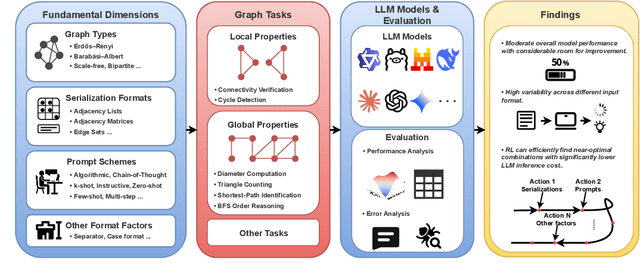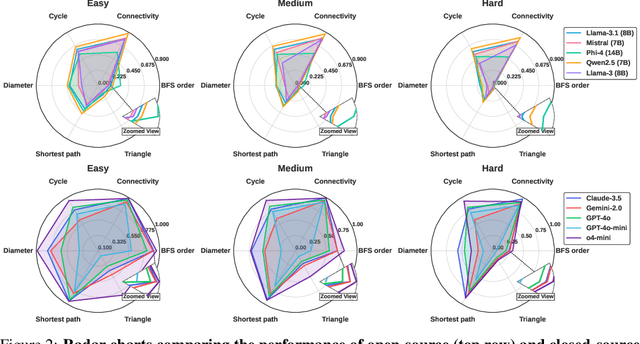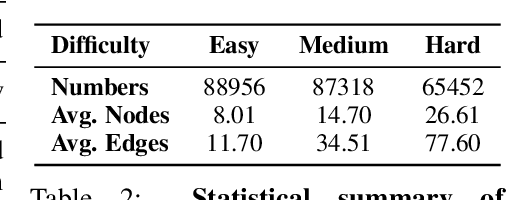Qixin Zhang
Effective Policy Learning for Multi-Agent Online Coordination Beyond Submodular Objectives
Sep 26, 2025Abstract:In this paper, we present two effective policy learning algorithms for multi-agent online coordination(MA-OC) problem. The first one, \texttt{MA-SPL}, not only can achieve the optimal $(1-\frac{c}{e})$-approximation guarantee for the MA-OC problem with submodular objectives but also can handle the unexplored $\alpha$-weakly DR-submodular and $(\gamma,\beta)$-weakly submodular scenarios, where $c$ is the curvature of the investigated submodular functions, $\alpha$ denotes the diminishing-return(DR) ratio and the tuple $(\gamma,\beta)$ represents the submodularity ratios. Subsequently, in order to reduce the reliance on the unknown parameters $\alpha,\gamma,\beta$ inherent in the \texttt{MA-SPL} algorithm, we further introduce the second online algorithm named \texttt{MA-MPL}. This \texttt{MA-MPL} algorithm is entirely \emph{parameter-free} and simultaneously can maintain the same approximation ratio as the first \texttt{MA-SPL} algorithm. The core of our \texttt{MA-SPL} and \texttt{MA-MPL} algorithms is a novel continuous-relaxation technique termed as \emph{policy-based continuous extension}. Compared with the well-established \emph{multi-linear extension}, a notable advantage of this new \emph{policy-based continuous extension} is its ability to provide a lossless rounding scheme for any set function, thereby enabling us to tackle the challenging weakly submodular objectives. Finally, extensive simulations are conducted to validate the effectiveness of our proposed algorithms.
Your Reward Function for RL is Your Best PRM for Search: Unifying RL and Search-Based TTS
Aug 19, 2025Abstract:Test-time scaling (TTS) for large language models (LLMs) has thus far fallen into two largely separate paradigms: (1) reinforcement learning (RL) methods that optimize sparse outcome-based rewards, yet suffer from instability and low sample efficiency; and (2) search-based techniques guided by independently trained, static process reward models (PRMs), which require expensive human- or LLM-generated labels and often degrade under distribution shifts. In this paper, we introduce AIRL-S, the first natural unification of RL-based and search-based TTS. Central to AIRL-S is the insight that the reward function learned during RL training inherently represents the ideal PRM for guiding downstream search. Specifically, we leverage adversarial inverse reinforcement learning (AIRL) combined with group relative policy optimization (GRPO) to learn a dense, dynamic PRM directly from correct reasoning traces, entirely eliminating the need for labeled intermediate process data. At inference, the resulting PRM simultaneously serves as the critic for RL rollouts and as a heuristic to effectively guide search procedures, facilitating robust reasoning chain extension, mitigating reward hacking, and enhancing cross-task generalization. Experimental results across eight benchmarks, including mathematics, scientific reasoning, and code generation, demonstrate that our unified approach improves performance by 9 % on average over the base model, matching GPT-4o. Furthermore, when integrated into multiple search algorithms, our PRM consistently outperforms all baseline PRMs trained with labeled data. These results underscore that, indeed, your reward function for RL is your best PRM for search, providing a robust and cost-effective solution to complex reasoning tasks in LLMs.
Data-Efficient Biomedical In-Context Learning: A Diversity-Enhanced Submodular Perspective
Aug 11, 2025Abstract:Recent progress in large language models (LLMs) has leveraged their in-context learning (ICL) abilities to enable quick adaptation to unseen biomedical NLP tasks. By incorporating only a few input-output examples into prompts, LLMs can rapidly perform these new tasks. While the impact of these demonstrations on LLM performance has been extensively studied, most existing approaches prioritize representativeness over diversity when selecting examples from large corpora. To address this gap, we propose Dual-Div, a diversity-enhanced data-efficient framework for demonstration selection in biomedical ICL. Dual-Div employs a two-stage retrieval and ranking process: First, it identifies a limited set of candidate examples from a corpus by optimizing both representativeness and diversity (with optional annotation for unlabeled data). Second, it ranks these candidates against test queries to select the most relevant and non-redundant demonstrations. Evaluated on three biomedical NLP tasks (named entity recognition (NER), relation extraction (RE), and text classification (TC)) using LLaMA 3.1 and Qwen 2.5 for inference, along with three retrievers (BGE-Large, BMRetriever, MedCPT), Dual-Div consistently outperforms baselines-achieving up to 5% higher macro-F1 scores-while demonstrating robustness to prompt permutations and class imbalance. Our findings establish that diversity in initial retrieval is more critical than ranking-stage optimization, and limiting demonstrations to 3-5 examples maximizes performance efficiency.
Fractional Spike Differential Equations Neural Network with Efficient Adjoint Parameters Training
Jul 22, 2025Abstract:Spiking Neural Networks (SNNs) draw inspiration from biological neurons to create realistic models for brain-like computation, demonstrating effectiveness in processing temporal information with energy efficiency and biological realism. Most existing SNNs assume a single time constant for neuronal membrane voltage dynamics, modeled by first-order ordinary differential equations (ODEs) with Markovian characteristics. Consequently, the voltage state at any time depends solely on its immediate past value, potentially limiting network expressiveness. Real neurons, however, exhibit complex dynamics influenced by long-term correlations and fractal dendritic structures, suggesting non-Markovian behavior. Motivated by this, we propose the Fractional SPIKE Differential Equation neural network (fspikeDE), which captures long-term dependencies in membrane voltage and spike trains through fractional-order dynamics. These fractional dynamics enable more expressive temporal patterns beyond the capability of integer-order models. For efficient training of fspikeDE, we introduce a gradient descent algorithm that optimizes parameters by solving an augmented fractional-order ODE (FDE) backward in time using adjoint sensitivity methods. Extensive experiments on diverse image and graph datasets demonstrate that fspikeDE consistently outperforms traditional SNNs, achieving superior accuracy, comparable energy efficiency, reduced training memory usage, and enhanced robustness against noise. Our approach provides a novel open-sourced computational toolbox for fractional-order SNNs, widely applicable to various real-world tasks.
MaskPro: Linear-Space Probabilistic Learning for Strict (N:M)-Sparsity on Large Language Models
Jun 15, 2025Abstract:The rapid scaling of large language models (LLMs) has made inference efficiency a primary bottleneck in the practical deployment. To address this, semi-structured sparsity offers a promising solution by strategically retaining $N$ elements out of every $M$ weights, thereby enabling hardware-friendly acceleration and reduced memory. However, existing (N:M)-compatible approaches typically fall into two categories: rule-based layerwise greedy search, which suffers from considerable errors, and gradient-driven combinatorial learning, which incurs prohibitive training costs. To tackle these challenges, we propose a novel linear-space probabilistic framework named MaskPro, which aims to learn a prior categorical distribution for every $M$ consecutive weights and subsequently leverages this distribution to generate the (N:M)-sparsity throughout an $N$-way sampling without replacement. Furthermore, to mitigate the training instability induced by the high variance of policy gradients in the super large combinatorial space, we propose a novel update method by introducing a moving average tracker of loss residuals instead of vanilla loss. Finally, we conduct comprehensive theoretical analysis and extensive experiments to validate the superior performance of MaskPro, as well as its excellent scalability in memory efficiency and exceptional robustness to data samples. Our code is available at https://github.com/woodenchild95/Maskpro.git.
Dynamic Text Bundling Supervision for Zero-Shot Inference on Text-Attributed Graphs
May 23, 2025Abstract:Large language models (LLMs) have been used in many zero-shot learning problems, with their strong generalization ability. Recently, adopting LLMs in text-attributed graphs (TAGs) has drawn increasing attention. However, the adoption of LLMs faces two major challenges: limited information on graph structure and unreliable responses. LLMs struggle with text attributes isolated from the graph topology. Worse still, they yield unreliable predictions due to both information insufficiency and the inherent weakness of LLMs (e.g., hallucination). Towards this end, this paper proposes a novel method named Dynamic Text Bundling Supervision (DENSE) that queries LLMs with bundles of texts to obtain bundle-level labels and uses these labels to supervise graph neural networks. Specifically, we sample a set of bundles, each containing a set of nodes with corresponding texts of close proximity. We then query LLMs with the bundled texts to obtain the label of each bundle. Subsequently, the bundle labels are used to supervise the optimization of graph neural networks, and the bundles are further refined to exclude noisy items. To justify our design, we also provide theoretical analysis of the proposed method. Extensive experiments across ten datasets validate the effectiveness of the proposed method.
GraphOmni: A Comprehensive and Extendable Benchmark Framework for Large Language Models on Graph-theoretic Tasks
Apr 17, 2025



Abstract:In this paper, we presented GraphOmni, a comprehensive benchmark framework for systematically evaluating the graph reasoning capabilities of LLMs. By analyzing critical dimensions, including graph types, serialization formats, and prompt schemes, we provided extensive insights into the strengths and limitations of current LLMs. Our empirical findings emphasize that no single serialization or prompting strategy consistently outperforms others. Motivated by these insights, we propose a reinforcement learning-based approach that dynamically selects the best serialization-prompt pairings, resulting in significant accuracy improvements. GraphOmni's modular and extensible design establishes a robust foundation for future research, facilitating advancements toward general-purpose graph reasoning models.
Two Heads are Better Than One: Test-time Scaling of Multi-agent Collaborative Reasoning
Apr 14, 2025Abstract:Multi-agent systems (MAS) built on large language models (LLMs) offer a promising path toward solving complex, real-world tasks that single-agent systems often struggle to manage. While recent advancements in test-time scaling (TTS) have significantly improved single-agent performance on challenging reasoning tasks, how to effectively scale collaboration and reasoning in MAS remains an open question. In this work, we introduce an adaptive multi-agent framework designed to enhance collaborative reasoning through both model-level training and system-level coordination. We construct M500, a high-quality dataset containing 500 multi-agent collaborative reasoning traces, and fine-tune Qwen2.5-32B-Instruct on this dataset to produce M1-32B, a model optimized for multi-agent collaboration. To further enable adaptive reasoning, we propose a novel CEO agent that dynamically manages the discussion process, guiding agent collaboration and adjusting reasoning depth for more effective problem-solving. Evaluated in an open-source MAS across a range of tasks-including general understanding, mathematical reasoning, and coding-our system significantly outperforms strong baselines. For instance, M1-32B achieves 12% improvement on GPQA-Diamond, 41% on AIME2024, and 10% on MBPP-Sanitized, matching the performance of state-of-the-art models like DeepSeek-R1 on some tasks. These results highlight the importance of both learned collaboration and adaptive coordination in scaling multi-agent reasoning. Code is available at https://github.com/jincan333/MAS-TTS
Near-Optimal Online Learning for Multi-Agent Submodular Coordination: Tight Approximation and Communication Efficiency
Feb 07, 2025



Abstract:Coordinating multiple agents to collaboratively maximize submodular functions in unpredictable environments is a critical task with numerous applications in machine learning, robot planning and control. The existing approaches, such as the OSG algorithm, are often hindered by their poor approximation guarantees and the rigid requirement for a fully connected communication graph. To address these challenges, we firstly present a $\textbf{MA-OSMA}$ algorithm, which employs the multi-linear extension to transfer the discrete submodular maximization problem into a continuous optimization, thereby allowing us to reduce the strict dependence on a complete graph through consensus techniques. Moreover, $\textbf{MA-OSMA}$ leverages a novel surrogate gradient to avoid sub-optimal stationary points. To eliminate the computationally intensive projection operations in $\textbf{MA-OSMA}$, we also introduce a projection-free $\textbf{MA-OSEA}$ algorithm, which effectively utilizes the KL divergence by mixing a uniform distribution. Theoretically, we confirm that both algorithms achieve a regret bound of $\widetilde{O}(\sqrt{\frac{C_{T}T}{1-\beta}})$ against a $(\frac{1-e^{-c}}{c})$-approximation to the best comparator in hindsight, where $C_{T}$ is the deviation of maximizer sequence, $\beta$ is the spectral gap of the network and $c$ is the joint curvature of submodular objectives. This result significantly improves the $(\frac{1}{1+c})$-approximation provided by the state-of-the-art OSG algorithm. Finally, we demonstrate the effectiveness of our proposed algorithms through simulation-based multi-target tracking.
Refining Adaptive Zeroth-Order Optimization at Ease
Feb 03, 2025Abstract:Recently, zeroth-order (ZO) optimization plays an essential role in scenarios where gradient information is inaccessible or unaffordable, such as black-box systems and resource-constrained environments. While existing adaptive methods such as ZO-AdaMM have shown promise, they are fundamentally limited by their underutilization of moment information during optimization, usually resulting in underperforming convergence. To overcome these limitations, this paper introduces Refined Adaptive Zeroth-Order Optimization (R-AdaZO). Specifically, we first show the untapped variance reduction effect of first moment estimate on ZO gradient estimation, which improves the accuracy and stability of ZO updates. We then refine the second moment estimate based on these variance-reduced gradient estimates to better capture the geometry of the optimization landscape, enabling a more effective scaling of ZO updates. We present rigorous theoretical analysis to show (I) the first analysis to the variance reduction of first moment estimate in ZO optimization, (II) the improved second moment estimates with a more accurate approximation of its variance-free ideal, (III) the first variance-aware convergence framework for adaptive ZO methods, which may be of independent interest, and (IV) the faster convergence of R-AdaZO than existing baselines like ZO-AdaMM. Our extensive experiments, including synthetic problems, black-box adversarial attack, and memory-efficient fine-tuning of large language models (LLMs), further verify the superior convergence of R-AdaZO, indicating that R-AdaZO offers an improved solution for real-world ZO optimization challenges.
 Add to Chrome
Add to Chrome Add to Firefox
Add to Firefox Add to Edge
Add to Edge